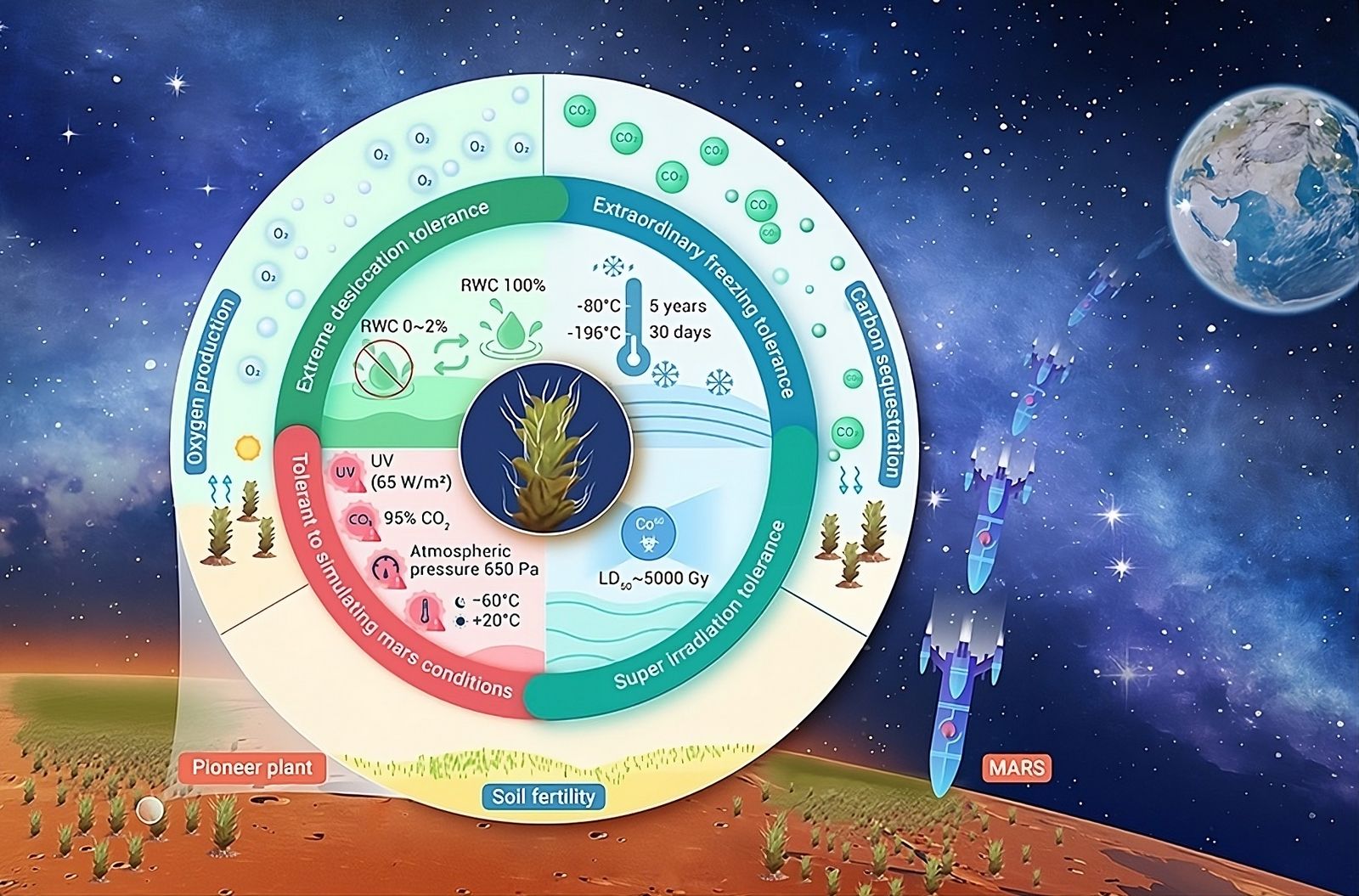This moss could survive on Mars, a possible terraforming solution?
Published by Cédric,
Article by: Cédric DEPOND
Source: The Innovation
Other Languages: FR, DE, ES, PT
Article by: Cédric DEPOND
Source: The Innovation
Other Languages: FR, DE, ES, PT
Follow us on Google News (click on ☆)

The Innovation published a study on July 1, 2024, conducted by researchers from the Chinese Academy of Sciences. They highlighted the exceptional survival capabilities of Syntrichia caninervis. This moss was subjected to extreme temperatures ranging from -112°F to -319°F (-80°C to -195°C), high levels of radiation, and conditions simulating those of Mars. The results show that this moss could play a key role in the terraforming of the Red Planet.
Syntrichia caninervis already grows in extreme environments on Earth, such as the Mojave Desert and Antarctica. The tests demonstrated that this moss can survive temperatures ranging between -88°F and 68°F (-67°C and 20°C), typical of Mars, as well as radiation doses of 500 grays (Gy). For comparison, a dose of 50 Gy would be lethal for a human. Additionally, this moss showed an ability to regenerate after prolonged freezing periods, which is essential for surviving Martian conditions.
The researchers used a planetary atmosphere simulator to recreate Martian conditions: an atmosphere composed of 95% CO2, low atmospheric pressures, extremely low temperatures, and high levels of UV radiation. Under these conditions, Syntrichia caninervis exhibited a 100% recovery rate after a 30-day exposure. Dehydrated mosses before exposure regenerated faster than those that were hydrated.
Despite these promising results, experts like Stuart McDaniel from the University of Florida stress that this moss alone could not provide a significant source of oxygen on Mars. Additionally, Wieger Wamelink from Wageningen University reminds us that the tests were conducted on terrestrial soil, not Martian soil. This raises doubts about the real ability of Syntrichia caninervis to thrive on Mars.
Terraforming Mars remains a hypothetical concept, but this discovery shows that terrestrial organisms like Syntrichia caninervis could potentially help create habitable conditions on the Red Planet. Future experiments will need to determine if this moss can truly contribute to the colonization of Mars and the Moon.